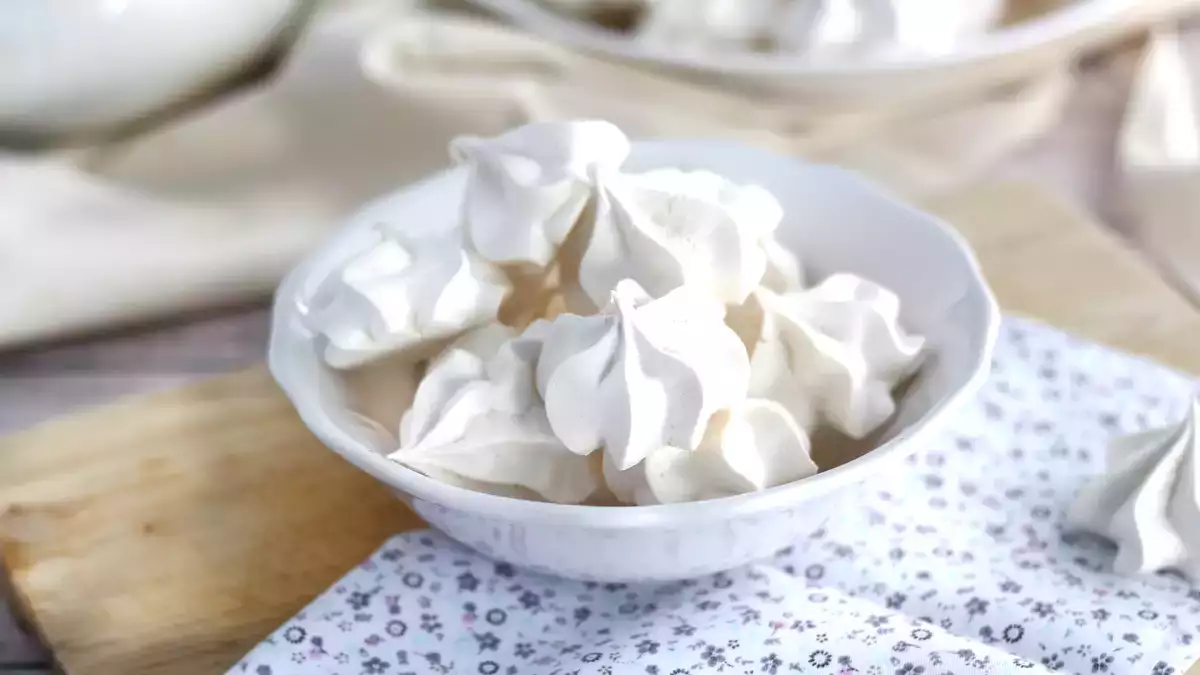Most common mistakes when making meringue and how to avoid them for perfect peaks every time

Meringue is a baking classic that seems simple: egg whites and sugar. Nothing more. However, few recipes have accumulated so many setbacks at home. It gives the impression that its preparation hides traps capable of frustrating the most enthusiastic: meringues that turn down in minutes, sandy masses, peaks that do not set or sticky textures even if you have followed the recipe to the letter.
Everything has a solution: the key is to understand the logic and respect the technique. In these lines we review the most common mistakes and how to avoid them, with technical tips and easy-to-apply homemade tricks.
1. Not choosing the right meringue
There are three main ways to make meringue, and each has its specific uses:
- French (or common): it is assembled cold, it is the quickest to prepare, but also the least stable. It is used in meringue cookies, light bases such as dacquoise or as a starting point for macarons.
- Swiss: it is prepared in a bain-marie and is firmer and denser. It is very appreciated for mousses, decorations that need consistency and toppings that must hold.
- Italian: it is made with hot syrup and is the most resistant. Ideal for iced cakes, semifreddi and stable decorations, as the cooked syrup provides firmness and food safety.
2. Eggs too fresh or too old
Not all eggs are good. Freshly laid eggs have such thick whites that it is difficult for them to trap air; those that are too old beat immediately, but collapse quickly. Eggs that have been rested for 3 to 5 days are ideal. Separate them when they are cold (so that the yolk does not break), and then leave the whites at room temperature: they whip better and facilitate a more stable whipping.
Nowadays, pasteurized egg whites, easy to find in most supermarkets, are a practical option: they guarantee food safety and offer a more predictable whipping result.
3. Traces of grease in the bowl or on the rods
The number one enemy of meringue is fat. A small amount of egg yolk, a bowl with leftover butter or a badly washed spoon is enough to ruin it. Always use stainless steel or glass bowls, never plastic, and rub them with a few drops of lemon or vinegar before starting. Be sure to dry them well, so that no moisture remains, and the egg whites will be able to trap air unhindered.
4. Sugar at the wrong time
Sugar is not a mere sweetener: it is the "scaffolding" that gives firmness to the meringue. But you have to know when and how to add it. If it is added too early, it crushes the foam; if it is added at the end, it leaves granules. The right moment is when the egg whites begin to form a light foam: then add the sugar little by little, in the form of a fine rain. It is advisable to use superfine sugar or to mix with a part of powdered sugar, which helps to achieve a smooth, shiny and lump-free creamy texture.
5. Over or under whipping
The whipping makes all the difference. If it is cut too early, the meringue becomes loose and sinks; if it is too long, the egg white dries out, cuts and releases liquid. The right point can be recognized by lifting the whipping stick: the meringue forms a firm peak, which stands upright but with a slightly curved tip. To get there, it is best to work at medium-high speed, not maximum, so that the bubbles are fine and stable.
6. Ignoring humidity
Meringue absorbs moisture from the environment like a sponge, which is why it becomes soft and sticky on rainy days. If you want to obtain very dry and crunchy meringues (also called sighs or dry meringues), try to do it on a clear day or use the oven with a fan at low temperature (195-210°F/90-100°C).
If your oven allows it, leave the door ajar to allow the steam to escape. It is not baking, but a slow drying process that requires patience.
7. Failure to stabilize egg whites
The egg whites can be reinforced with small gestures: a few drops of lemon juice or a pinch of cream of tartar delay over-beating and add consistency by stabilizing the protein structure. Ideally, they should be added at the beginning of the whipping, when the egg whites are still liquid, so that they act from the first moment.
What if, even if you follow the advice, you get off?
If your meringue loses volume, you can still try to recover it. Whip it again with a little more sugar or add a fresh semi-whipped egg white to restore air. Another option is to heat it for a few minutes in a bain-marie while beating it again: the heat helps to stabilize it.
And if it fails to regain its initial firmness, do not discard it: you can integrate it into a mousse, an angel food cake, marshmallows or mix it with fruit. In baking, almost everything finds a destination.
Meringue: the art that admits second chances
Meringue is not complicated, but it requires attention. Eggs at the right point, clean utensils, sugar added calmly and patience to beat and dry are the pillars. If they are met, the reward is that light, shiny cloud that transforms any dessert. Meringue is not a mystery, but pure culinary chemistry: understanding how it works is the key to getting closer and closer to the perfect result. And if something goes wrong, baking always offers delicious ways out.
 Patricia González
Patricia González
Comments